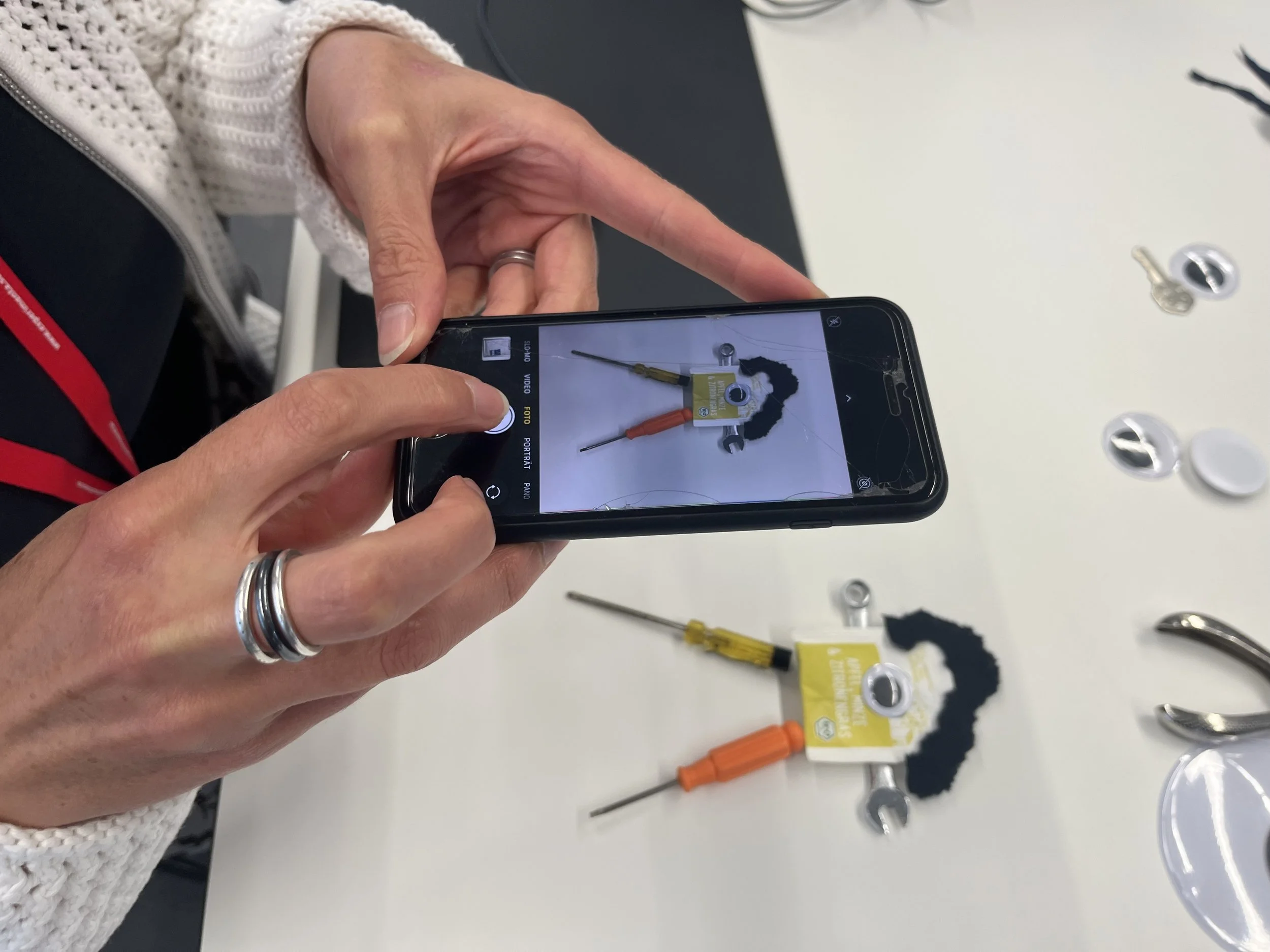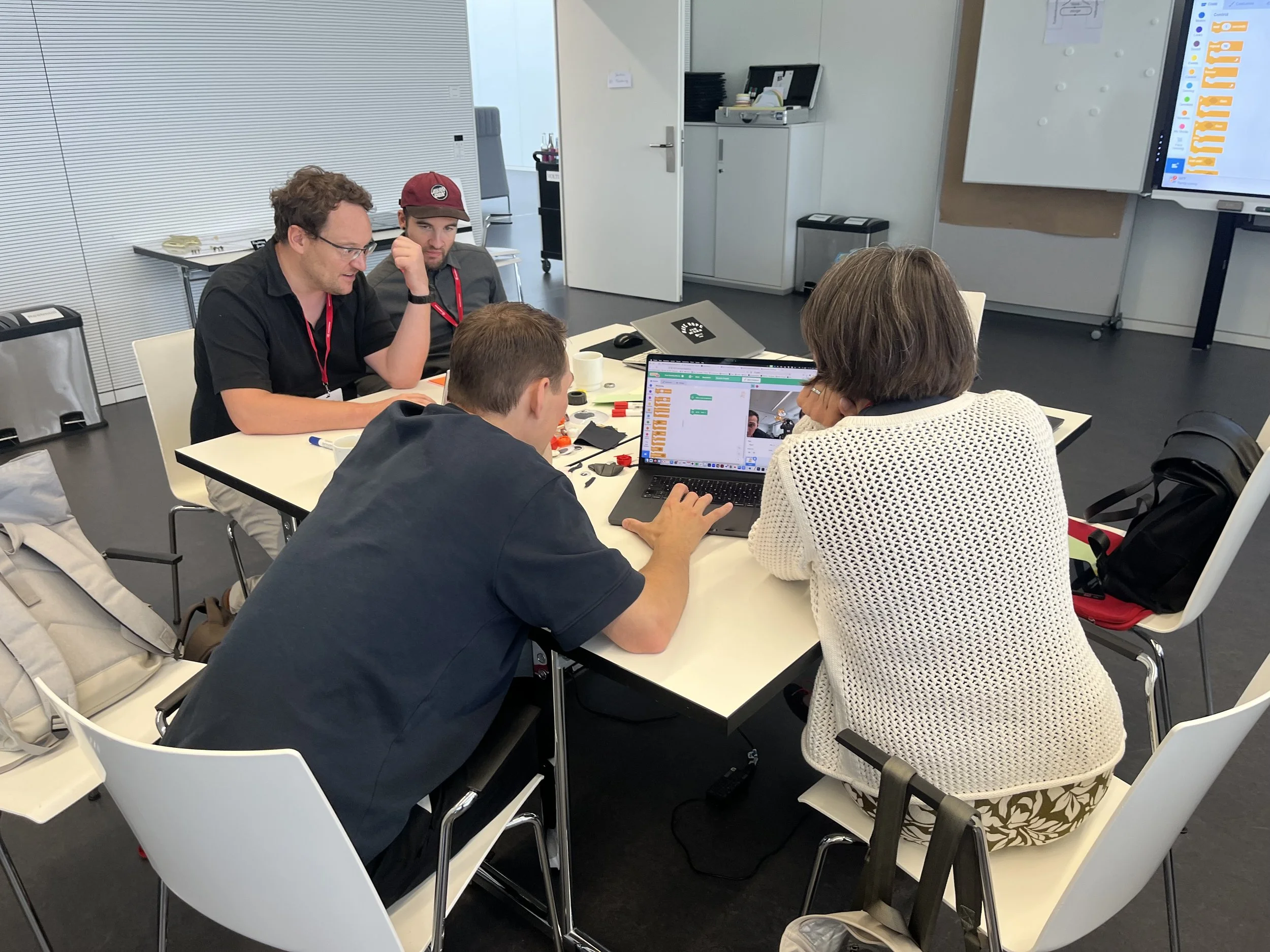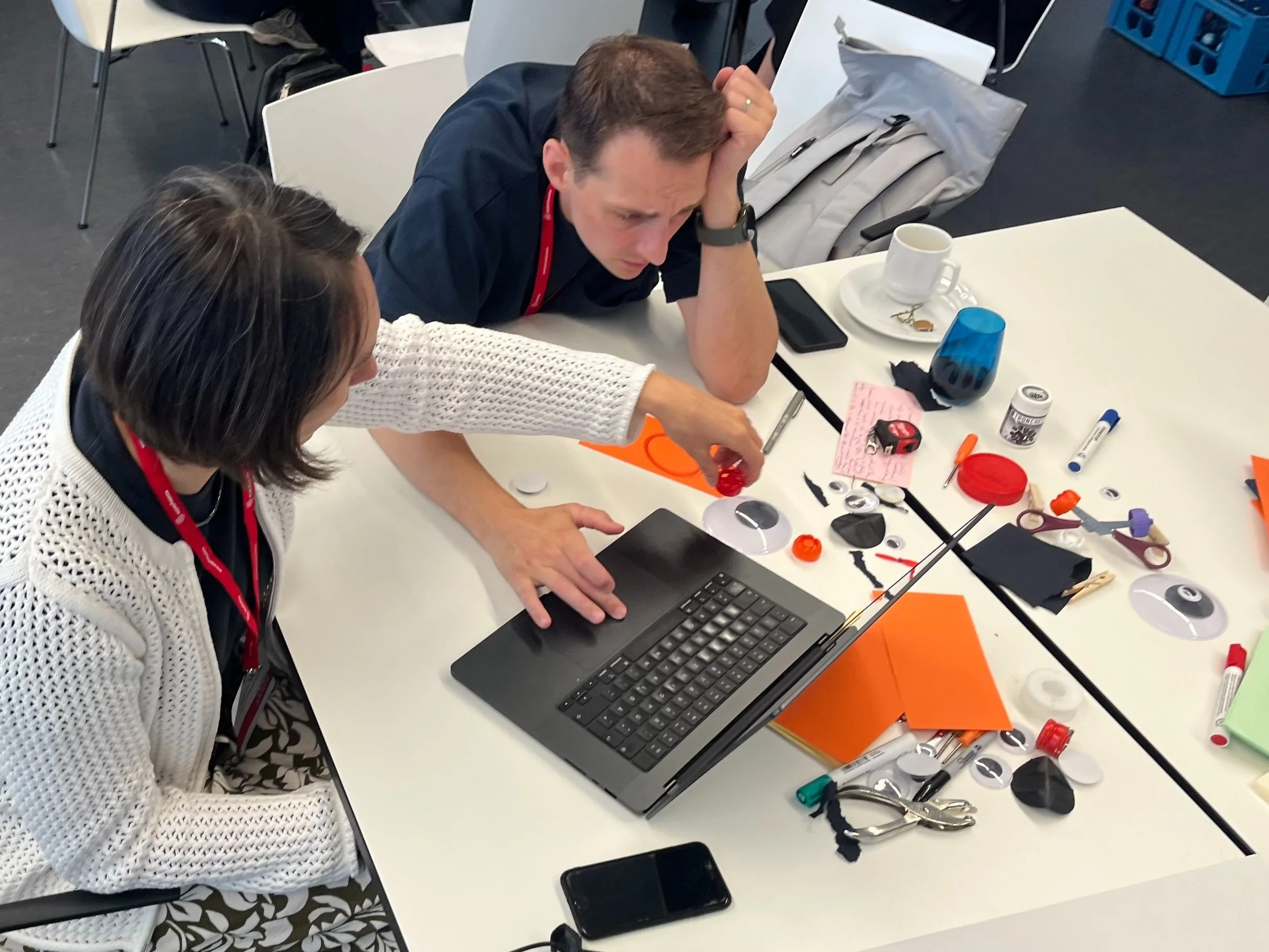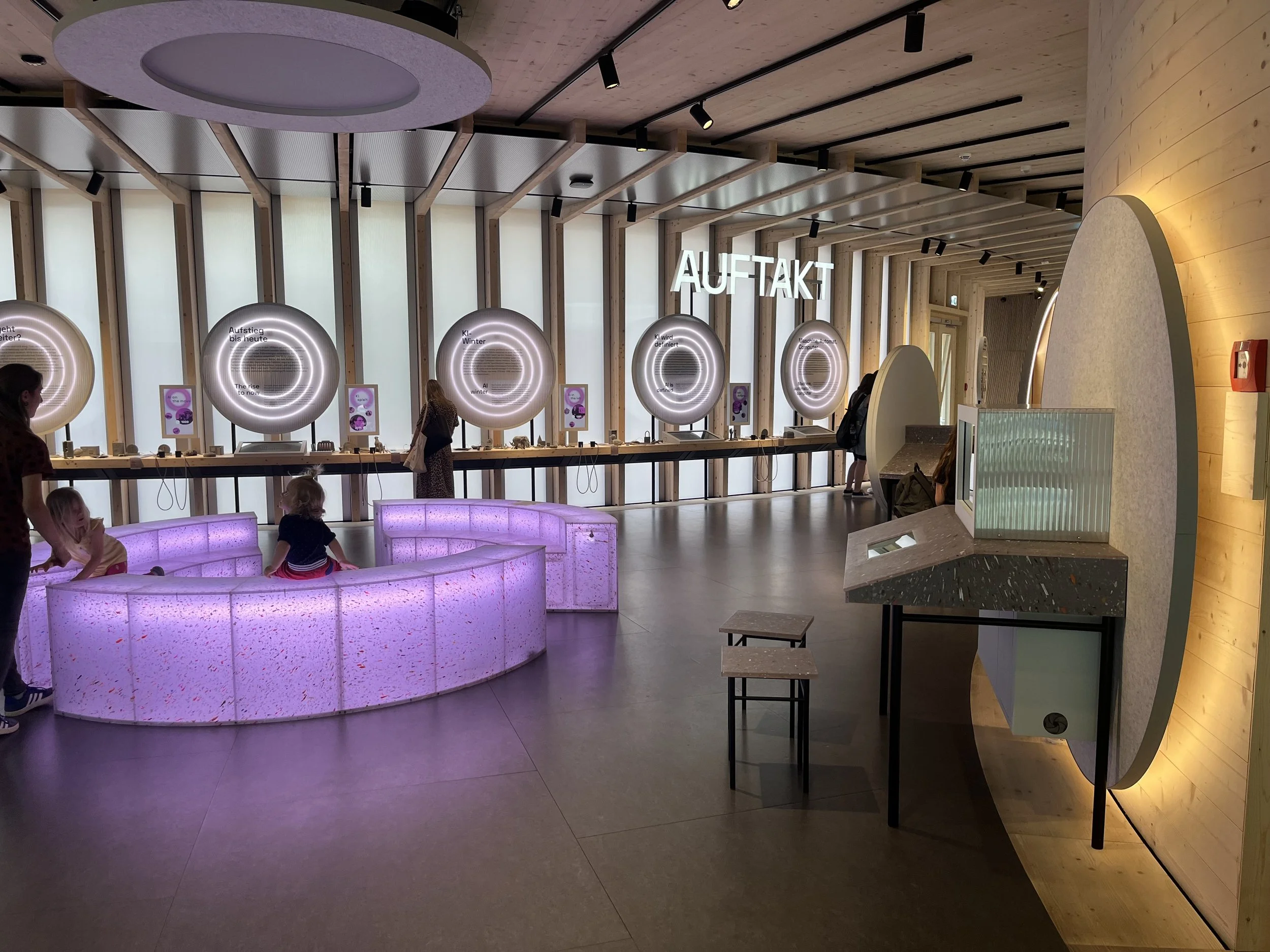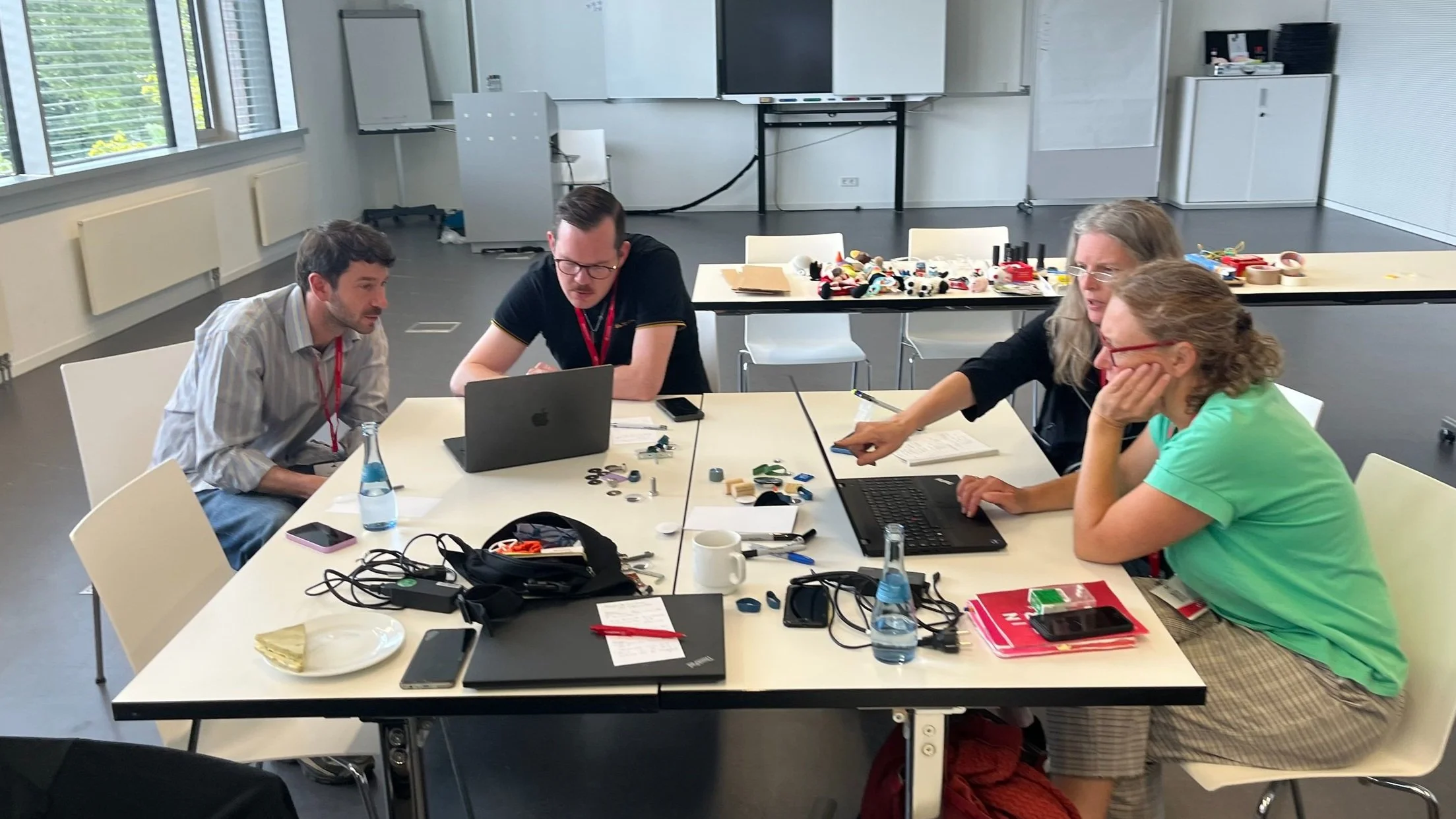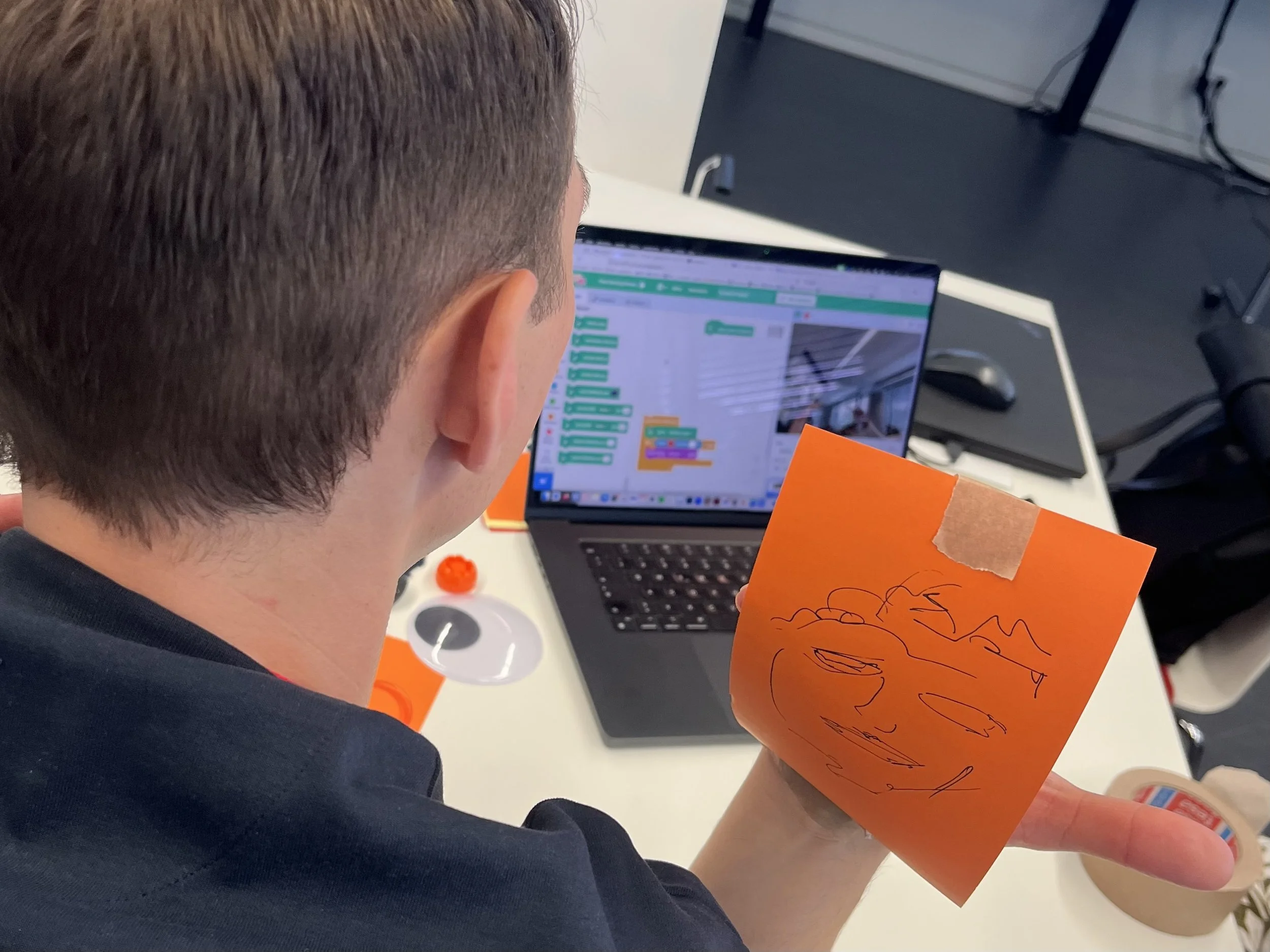Approaches to Tinkering with AI
When integrating any new technology into tinkering activities it’s important to engage with open prototyping and collaborative reflection about the process. This past week I had the chance to lead a workshop on playful and creative AI projects with participants at the Inter.aktion conference at Experimenta Science Center in Heilbronn.
The prototypes that we tried together were based on some of the recent experiments that I explored with the NEXUS experiment lab at the University of Freiburg. I took the chance to go a little bit deeper with Scratch Lab face sensing, making some examples that included drawing using the pen function, adding distorted images of facial features and making sound activated fire breathing demo.
It was really interesting to see how the participants get into the process of asking questions and trying new things with the available tools. Many of them had never played around with Scratch before and the idea of playful AI experimentation also felt new to most.
After going through a few initial experiments with the platform, I could see that the group become more engaged by adding in different objects or drawings to see if they could trick the face sensing program. Many groups started testing out theories of what qualities of the face does the AI notice by hand drawing a series of test images.
During the workshop I was struck by a question from one of the participants about the goal for the activity. I think that she felt a bit uncomfortable with AI in general (a feeling I can relate to) and was wondering why we weren’t spending more time explaining how the program works. She saw the scratch app as a bit of a black box where the theory behind why the face sensor was working and where one might find it in the real world are hidden. These are great questions and the comments made me confront some of my own assumptions about the workshop topic.
While I agree with the idea of making the technology as transparent as possible and the connections to the real world relevant, I also feel that getting people to play and experiment as fast as possible is a priority in a short workshop experience. I thought about the classic “circuit boards” activity that we developed at the tinkering studio as something similar in that we don’t start out (or even usually get to) talking about the physics of how electrons and protons flow through a material. The goal is more to let participants get hands-on experience and build something personally meaningful. For me the preferred outcome of the experience is a variety of end-points and next steps and I was happy that some people wanted to explore vibe coding, some people had questions about where you can find face sensing in real life, others were interested in creating a definition of how the AI sees a face and others wanted to explore tracking people around a space.
Some of these questions can be investigated through further experimentation and others might lead to research online or in an exhibition like the KI-Pavillion at Experimenta. I think it’s a great thing if people leave a workshop with a desire to learn more and new questions that they didn’t know how to formulate before the activity.
In the workshop I shared this quote from Mitchel Resnick which I think applies to a wide variety of topics, “the most important educational opportunities will come not from teaching students about AI but rather in helping students learn with AI — that is, supporting students in using AI tools to imagine, create, share, and learn. And, as a bonus, learning with AI can be the best way for students to learn about AI too”.
I’m still working on this AI workshop design and tweaking the activities, examples and flow. I think there will be lots more iteration required to make everything go smoothly. But during the process of developing a new activity (especially one with a new technology) it’s important to reflect that the goal for a tinkering experience is not to impart discreet content information but to open up possibilities for exploration and curiosity.






